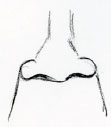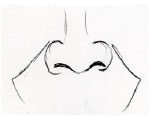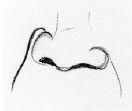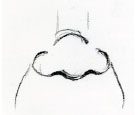Drawing expressive noses can be something of a challenge…
… in that the nose doesn’t have nearly as much freedom of movement as the other features of the face.
As you would expect, the change in the nose is subtle.
Most of the expression is shown in the lines that run from the corners of the nostrils down to the corners of the mouth.
These are called the nasolabial folds, and they move with the mouth, accenting the underlying muscle structure of the cheeks.
Because mouths are so different, it is the shape of these folds more than the direction of the lips that really indicate certain expressions.
For instance, even when the corners of the mouth turn down, the nasolabial folds will indicate whether or not the cheek muscles are pulling in a smile.
In angry, bland, and neutral expressions, the folds are straight, showing no involvement of the cheeks whatsoever, and therefore also showing early that the mouth is not smiling.
When the mouth opens in a scream, laugh, yawn and so forth, the nasolabial folds push out and accentuate the happiness or anger by highlighting the shape of the mouth.
The farthest point of the curve is kept high in happy expressions, and dips down low in anger or sadness.
The nose also shows expression in the nostrils. In expressions of annoyance, the nostrils often flare, raise in a sneer, or flatten.
Nostrils may often flare in expressions of surprise, horror, crying, and intense anger. In both disgusted and flirtatious or cutesy expressions, the nose may wrinkle and lift, making a line appear above the ball of the nose.
As the head tilts with different expressions, the view of the nose changes as well, and should be studied carefully to make sure the perspective remains realistic.
When the head tips forward, the top of the nostrils are visible, none of the nostrils. As the head tips back, the nostrils and outline of the ball of the nose are visible.
This position is useful for sneering, condescending expressions, but will also come into effect whenever the head jerks back, as in shock, fright, or uproarious laughter.
Because the nose is so similar in these wildly different expressions, you need to draw the eyes and mouth carefully to make sure that the right emotion is being expressed, or you’ll end up with expressions that don’t make sense, such as a disgusted flirty look.
Every feature is involved in an expression, and they work together to tell a complete story.
Facial Expression Mastery is generously illustrated showing you step-by-step how to make your drawings facial expressions look life like.
With clear (and fun) instructions on how to draw …
… you’ll learn at your own pace in the comfort of your home.
You get 10 high definition videos with simple and easy to follow written instructions.
By the end of it — you’ll know exactly how to make your drawings jump off the page.

